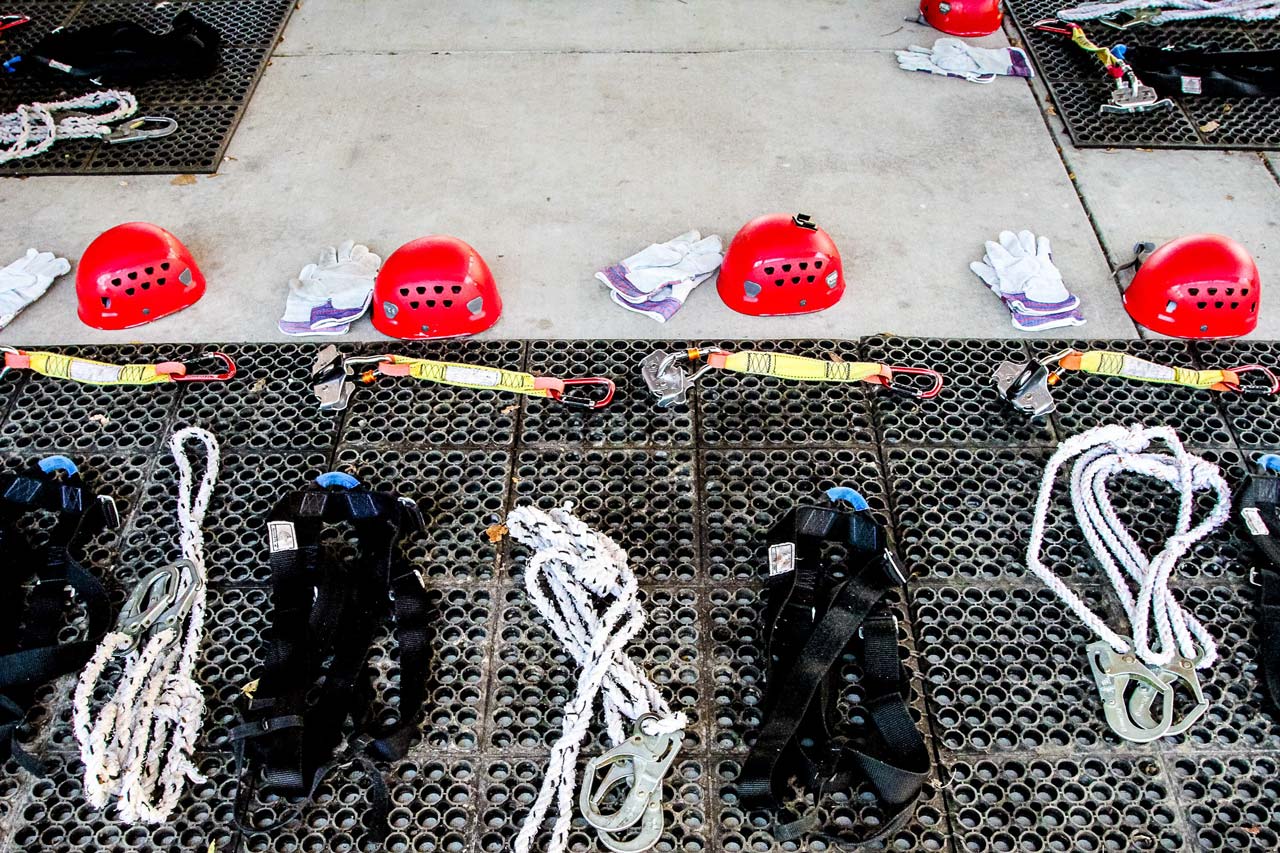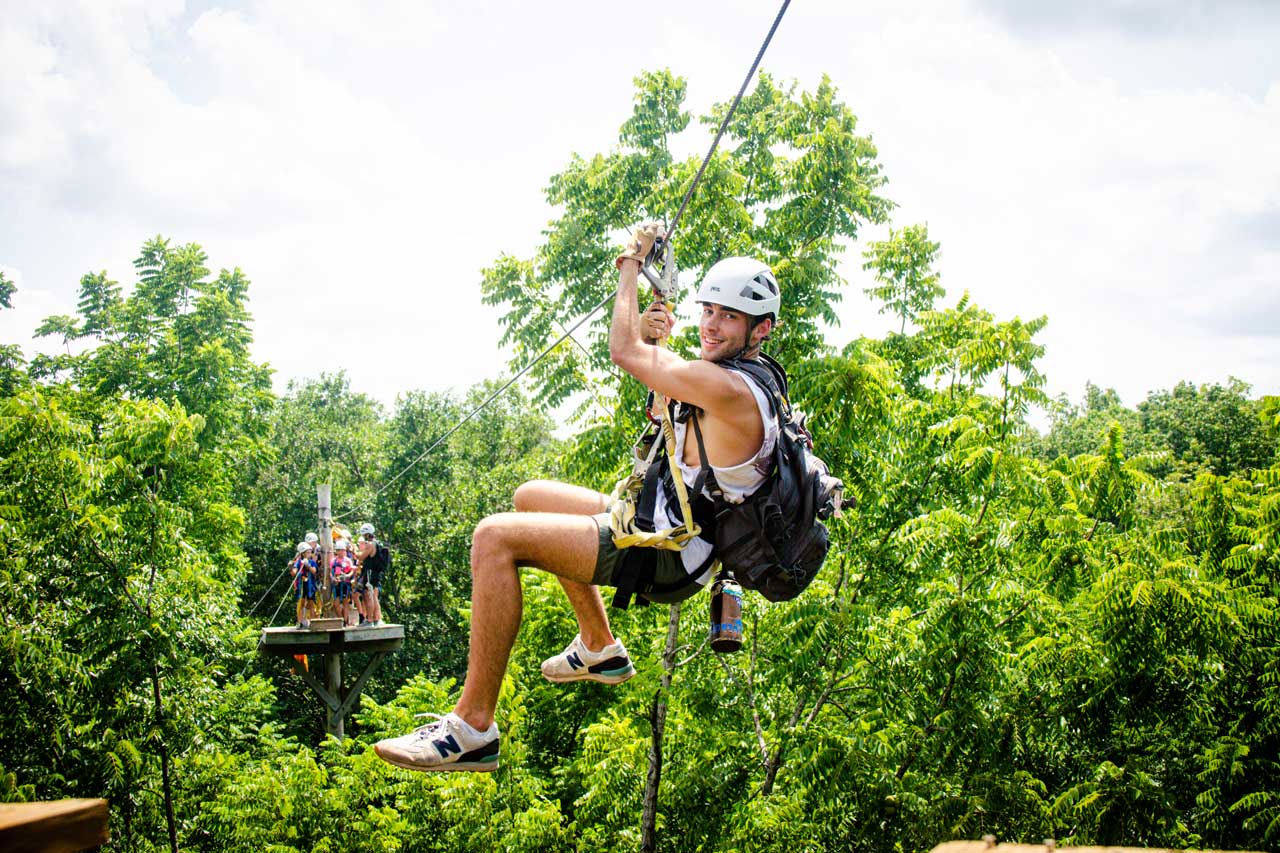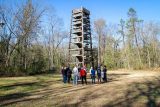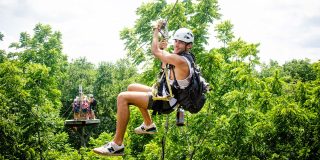What is Ziplining?
Ziplining Tips
4 years ago
Ziplining has become a growing attraction for adventure lovers. But what exactly is it? And who got the first idea to put a cable between two points and ride it? Simply put, ziplining is riding a cable from one point to another using a harness, helmet, and a trolley (or pulley). Let’s break down these terms a little more.

- Helmet- Looks kind of like a bike helmet but ours are required to be cleared by the Association for Challenge Course Technology or ACCT. We wear helmets to protect us from falling things like sticks, acorns, etc., as well as bumping your head into trees, cables, or other participants while you’re standing on the platforms.
- Harness- Canaan utilizes full-body harnesses to offer better protection and comfort. Full-body harnesses tighten down around your legs, waist, and shoulders to keep you attached to your trolley.
- Trolley- a simple machine that utilizes wheels to redirect the downward force of the rider forward across the zipline. This helps you slow down on the zipline.
- Lobster (or crab) claws- a combination of webbing and big hooks with locking closures used as lifelines to keep participants safely attached to the cables.
- Cable- steel-grade wire rope. Canopy tours, like Canaan, utilize 7×19 steel cable. 7×19 means the one big main cable you see has 7 smaller cables and those 7 smaller cables are made up of 19 strands of wire. 7×19 steel cable has a breaking strength of 21,000 lbs.
Learn everything you need to know to prepare for your zipline canopy tour and don’t forget to read about what to wear when it’s cold.

History of Ziplining
While the exact start of ziplining is a bit of a mystery, the earliest uses give us some ideas. Himalayan natives used primitive ziplines to traverse the land faster and, believe it or not, safer. By ziplining instead of walking, natives could bypass dangerous terrain as well as transport equipment and supplies. Eventually, wildlife biologists studying the Costa Rican rainforests utilized ziplines to view the forest floor more efficiently and without disturbing the ecosystems they were trying to study. It wasn’t long before the idea of zip lines as a tourist attraction took root. Now, with over 400 registered zip line companies, ziplining has become a popular adventure activity.
Are There Benefits to Ziplining?
Besides feeding your adventurous side, ziplining has other benefits. Ziplining offers you a unique view of the environment around you. Canaan, for example, allows you to see the Catawba river from a different perspective. Additionally, ziplining allows you to see the woods with less impact. Instead of walking and compacting a trail, you’re seeing the same area from an eco-friendly view.
Do Zip Lines Hurt the Trees They’re Built In?
Course design and construction play an important role in protecting our trees. After all, trees serve a vital purpose for the environment, the life of our zipline course, and most importantly the safety of our guests. Putting the necessary bolts in a tree does not harm it. In fact, bolts can be used to help split trees heal from damage. We take great care in protecting our trees and our course.
__________________________________________________
Ziplining is an incredible experience that comes from a practical beginning. It also serves as an eco-friendly nature experience that offers unique views of the environment. Come zip with us at Canaan Zipline to experience the Catawba River as you’ve never seen before!




